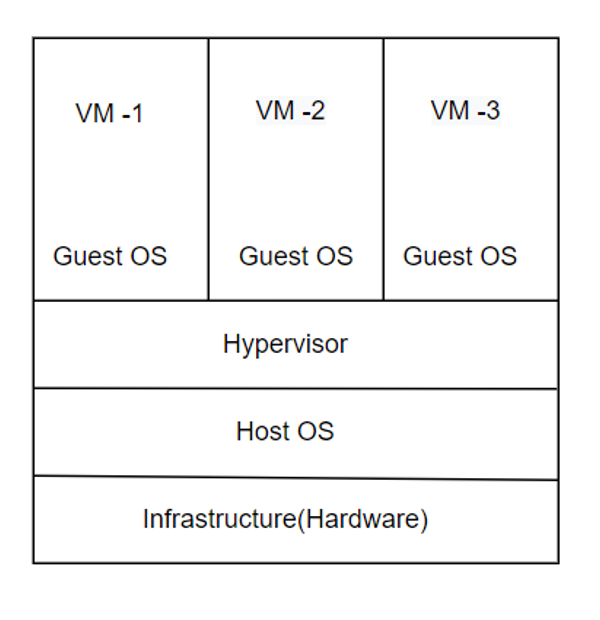Hypervisor
Hypervisor is a kind of software which allows us to have multiple virtual machines within one physical machine.
Basically, hypervisor will allocate the resources of the host physical machine (like RAM, CPU etc.) in between the virtual machines. This hypervisor provides portioning and isolation of the hardware and creates virtual machines, so it is also called virtualization hypervisor. So depending upon resource availability on the host machine, we can create a limited number of virtual machines. The virtual machines will have their own OS.
Types of Hypervisor
There are two types of Hypervisor.
- Type 1 hypervisor or Bare metal hypervisor or Native hypervisor
- Type 2 hypervisor or hosted hypervisor
Type 1 hypervisor or Bare metal hypervisor or Native hypervisor
This type of hypervisor runs directly on the hardware of the host machine. It does not need any underlying OS. This type of hypervisor directly talk with the hardware.
Example: Microsoft Hyper-V hypervisor, etc.
















